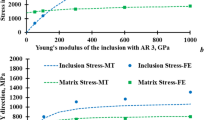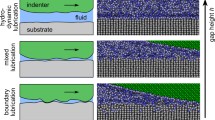Abstract
We present a parametric numerical study conducted with the finite element code CasimirSim developed by ARC Seibersdorf research. This simulation has already been applied to two dimensional geometries in the past and showed agreement with exact theoretical predictions between 100 nm and 10 μm. In the current investigation the code has been enhanced to compute arbitrary, nontrivial, fully three dimensional geometries for any material given by its density and dielectric polarizability. For calculation of the Casimir energy the simple Casimir Polder r −7 model is used. This approach is known to be of limited accuracy due to the assumption of perfect additivity of dipole interactions. Nonetheless, it can be used to give approximate predictions for sharply curved geometries inaccessible to other approximative schemes such as for example the established Proximity Force Approximation. In the current study, we show in detail the dependence of errors upon physical and numerical parameters. After verification with the plate–plate geometry experimentally relevant geometries such as sphere over plate or crossed cylinders are assessed. Finally, the simulation is applied to the more sophisticated geometries of stacked spherical shells, a gear wheel, and a cantilever, showing up some interesting properties.
Similar content being viewed by others
Abbreviations
- ħ :
-
Reduced Planck constant, 1.055 × 10−34 Js
- c 0 :
-
Vacuum speed of light, 2.998 × 108 m/s
- e :
-
Elementary charge, 1.602 × 10−19 C
- \(\varepsilon_0\) :
-
Electric permittivity of vacuum, 8.854 × 10−12 F/m
References
Tajmar M. (2004) Finite element simulation of Casimir forces in arbitrary geometries. Int. J. Modern Phys. C 15(10): 1387
Casimir H.B.G., Polder D. (1948) The influence of retardation on the London-van der Waals forces. Phys. Rev. 38: 360
Lisanti M., Iannuzzi D., Capasso F. (2005) Observation of the skin-depth effect on the Casimir force between metallic surfaces. PNAS 102(34): 11989
Mostepanenko V.M., Trunov N.N. (1997) The Casimir effect and its applications. Oxford University Press, New York
Tasci E.S., Erkoc S. (2002) Simulation of the Casimir polder effect for various geometries. Int. J. Modern Phys. C 13: 979
Klimchitskaya G.L., Mohideen U., Mostepanenko V.M. (2000) Casimir and van der Waals force between two plates or a sphere (lens) above a plate made of real metals. Phys. Rev. A 61: 062107
Milton K.A. (2004) The Casimir effect: recent controversies and progress. J. Phys. A 37: R209 [preprint:hep-th/0406024]
Lambrecht A., Reynaud S. (2000) Casimir force between metallic mirrors. Eur. Phys. J. D 8(3): 309
Blocki J., Randrup J., Swiatecki W.J., Tsang C.F. (1977) Proximity forces. Ann. Phys. (NY) 105(2): 427
Emig T., Jaffe R.L., Kardar M., Scardicchio A. (2006) Casimir interaction between a plate and a cylinder. Phys. Rev. Lett. 96: 080403 [preprint:cond-mat/0601055]
Lamoreaux S.K. (1997) Demonstration of the Casimir force in the 0.6 to 6μm range. Phys. Rev. Lett. 78: 5
Harris B.W., Chen F., Mohideen U. (2000) Precision measurement of the Casimir force using gold surfaces. Phys. Rev. A 62: 52109
Decca R.S., Lopez D., Fischbach E., Krause D.E. (2003) Measurement of the Casimir force between dissimilar metals. Phys. Rev. Lett. 91: 5
Boyer T.H. (1968) Quantum electromagnetic zero-point energy of a conducting spherical shell and the casimilar model for a charged particle. Phys. Rev. 174(5): 1764
Gies H., Langfeld K., Moyaerts L. (2003) Casimir effect on the worldline. JHEP 6: 18
Jaffe R.L., Scardicchio A. (2004) The Casimir effect and geometric optics. Phys. Rev. Lett. 92: 70402 [preprint:quant-ph/0310194]
Author information
Authors and Affiliations
Corresponding author
Rights and permissions
About this article
Cite this article
Sedmik, R., Vasiljevich, I. & Tajmar, M. Detailed parametric study of Casimir forces in the Casimir Polder approximation for nontrivial 3D geometries. J Computer-Aided Mater Des 14, 119–132 (2007). https://doi.org/10.1007/s10820-006-9026-9
Published:
Issue Date:
DOI: https://doi.org/10.1007/s10820-006-9026-9




